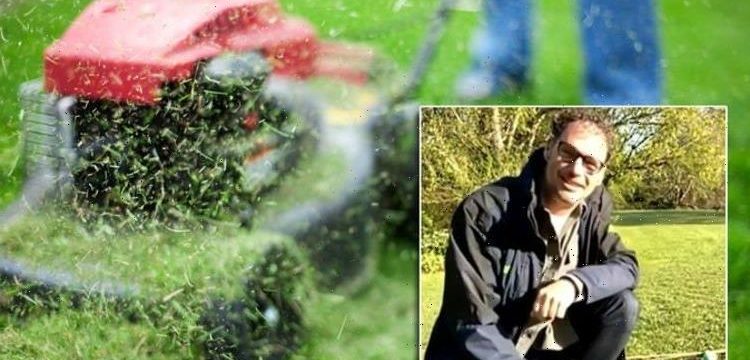BBC Breakfast: Expert outlines how to do No Mow May
When you subscribe we will use the information you provide to send you these newsletters. Sometimes they’ll include recommendations for other related newsletters or services we offer. Our Privacy Notice explains more about how we use your data, and your rights. You can unsubscribe at any time.
Speaking on BBC Breakfast, Botanical expert Dr Trevor Dines said gardeners should follow a “mow-hican approach”. This involves only mowing the lawn once in May – an unusual habit for gardeners at this time of year, who would usually be mowing weekly to keep the lawn looking perfect.
Dr Trevor urged this new approach to help wildlife, and speaking from Treborth Botanic Garden in Bangor he explained: “We keep some of them really short, and let some of them grow longer and this is the best thing for wildlife, what we call the ‘mow-hican’ approach (m-o-w) – brilliant for wildlife.
“This is an initiative by Plantlife called No Mow May, so we’re encouraging gardeners to put away their mowers for the month of May, put them to bed in the shed and just let the flowers grow on your lawn.
“It will be packed full of daisies and dandelions as well, and then at the end of the month we are asking people to put down a square metre quadrant – high tech science here, I’ve got a broom handle and a walking stick and some canes – mark out a one metre square.
“Count the numbers of dandelions, daisies, buttercups – whatever you’ve got in there.
“Send those results in to the Plantlife website and we can tell you your personal nectar score, how many bees those flowers in your lawn can feed.”
Explaining how to find the quadrant, Dr Trevor said: “To find your quadrant on your lawn, your not allowed to select the best bit where all the flowers are, so you have your golf ball or tennis ball and you throw that over your shoulder without looking, and where it lands that’s where you put your quadrant.”
However, this doesn’t mean gardeners shouldn’t mow at all ever again – and Dr Trevor said once a month is the ideal amount for those who really want to mow their lawn on occasion.
He continued: “Flower and nectar production are highest when gardeners mow just once a month and, if plants are already suffering from drought, the best thing you can do for pollinators is reduce mowing and allow remaining flowers to bloom.”
Research shared by Plantlife said that last year the UK had the driest May since 1896, which had a severe impact on flowers.
Their surveys showed a 56 percent reduction in dandelion flowers and 40 percent reduction in daisies on lawns.
Nectar production was down two percent on the year before.
Dr Trevor explained why this matters, and wrote: “Along with the browning grass, Every Flower Counts provides evidence for the first time that spring drought periods affect the timing and quantity of flower production on lawns, as early flowers wilt and summer species bloom earlier.
“With ongoing climate change, this could have important implications for delicate plant-pollinator relationships – 56 percent less dandelion flowers could have a serious impact on early emerging bumblebees for example – and these changes will be felt across other grassland habitats such as flower-rich meadows and road verges.”
Gardeners took to Twitter to share their success with No Mow May, and explain why they will be doing it again in 2021.
One wrote: “Great to see @DrTrevorDines on my telly this morning talking about#NoMowMay I helped convince my parents to do this last year and we got THE best clover honey from the bees = win win.”
Another said: “#NoMowMay so important for pollinators, help some wildflower sunshine paint your lawn, brilliant interview with Dr Trevor Dines from Plantlife.”
Sharing a picture of their growing lawn, one said: “Amazing what you find growing in the lawn if you leave it to grow. Hoping these cuckoo flowers will attract the orange tip butterflies in. #NoMowMay comes a bit late for these gems though!”
And one person reminded gardeners of the time saved by following No Mow May, writing: “Save yourself some time and energy as well as lots of bugs that need flowers. Also looks so lovely. What’s not to like #NoMowMay”.
Others were looking forward to comparing their growth to last year. One Twitter user wrote: “Love me some #NoMowMay. Did it last year and in hoping to beat last year’s species list.”
Source: Read Full Article


